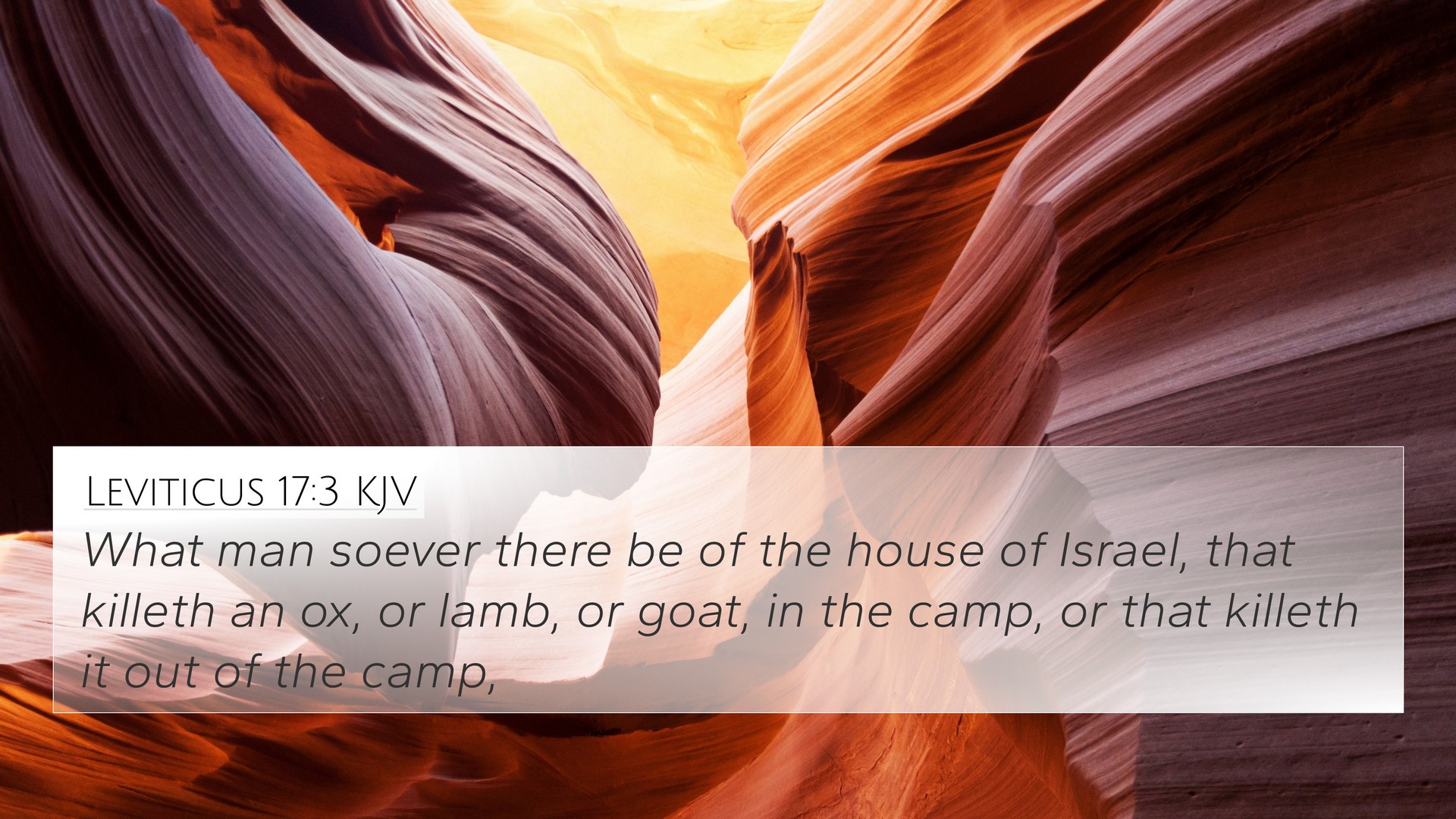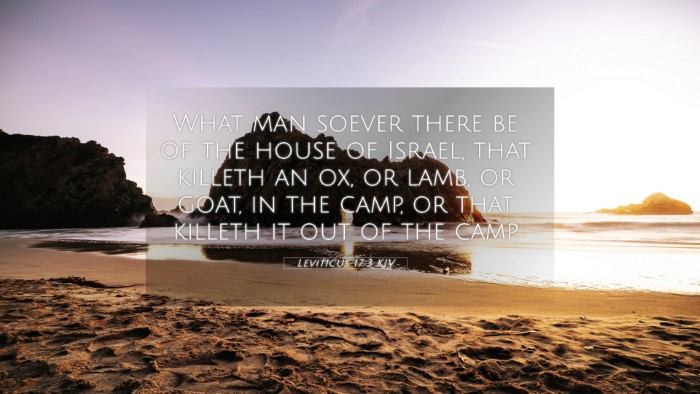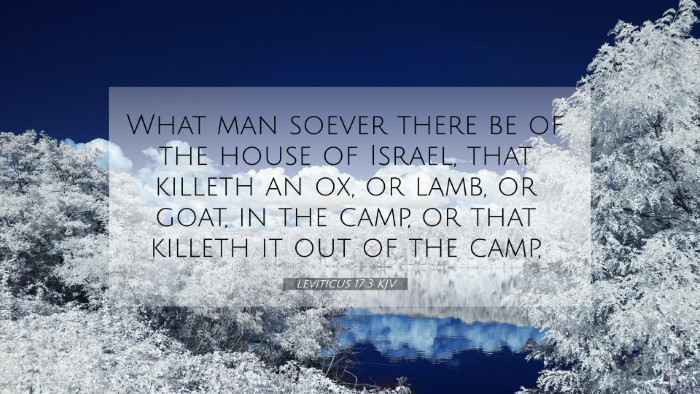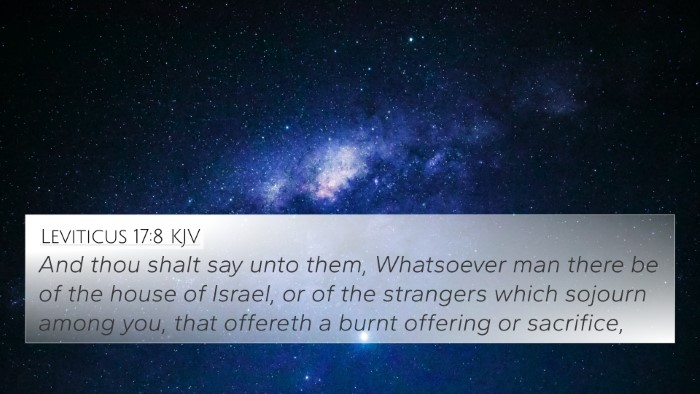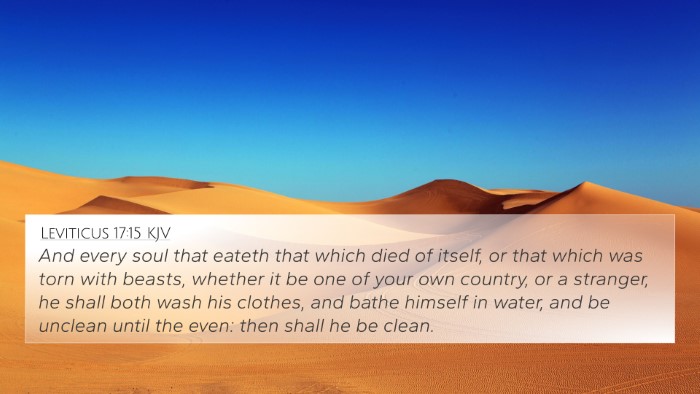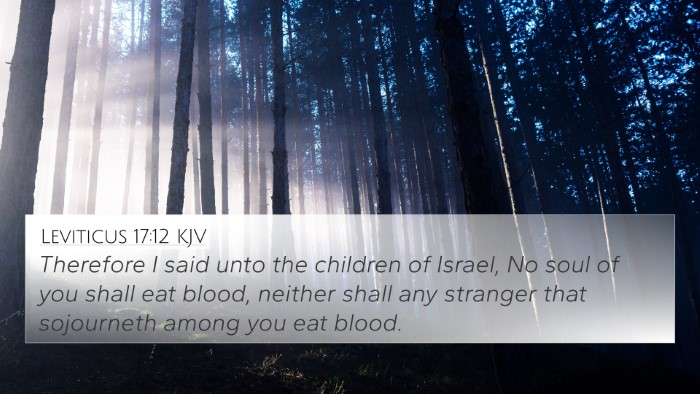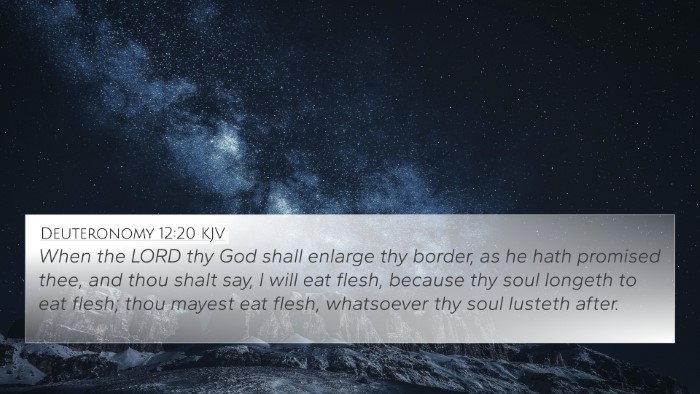Understanding Leviticus 17:3
Verse: "Any man of the house of Israel who kills an ox or a lamb or a goat in the camp, or who kills it outside the camp..." (Leviticus 17:3, ESV)
Overview
This verse establishes a critical directive regarding the sacrificial practices of the Israelites. It emphasizes the necessity of offering sacrifices at a designated place as it pertains to God's command and the sanctification of sacrifices.
Commentary Insights
-
Matthew Henry:
Henry emphasizes the importance of maintaining the sanctity of the sacrifices. He notes that any unauthorized sacrifice would be an act of rebellion against God's prescribed worship. This command reflects God’s desire for order and holiness in the practice of worship, directing attention to the place He chooses for sacrifice.
-
Albert Barnes:
Barnes outlines the significance of slaughtering animals for food in Israel and connects this to the broader context of its ceremonial laws. He stresses that by killing animals outside the appointed place, one risks profaning the worship of God, which must be done according to His specifications, ensuring communal worship and proper ritual observance.
-
Adam Clarke:
Clarke considers the health, social, and theological implications of the instruction. He points out that this command protects the community from exploitation and ensures that the sacrificial system remains pure. Clarke argues that such regulation expresses God’s profound concern for both the physical and spiritual welfare of His people.
Biblical Context and Themes
Leviticus 17:3 occurs within a larger section of laws governing sacrifice and priestly duties, depicting a serious concern for the holiness of worship. This command has implications for:
- Divine Order: Establishes the framework for acceptable sacrifice.
- Community Integrity: Ensures that worship is central and communal, rather than individualized.
- Holiness: Reinforces the idea that worship must be conducted in a sacred manner.
Cross References
- Exodus 20:24: "An altar of earth you shall make for me..." - Establishes the location and manner of offering to God.
- Deuteronomy 12:5-7: "But you shall seek the place that the Lord your God will choose..." - Emphasizes choosing a designated place for worship.
- Leviticus 1:9: "But its entrails and its legs he shall wash with water..." - Provides details on the sacrificial protocol.
- Numbers 18:3: "And they shall keep the charge of the tent of meeting..." - Highlights the role of priests in managing sacrifices.
- Leviticus 10:1-2: "Now Nadab and Abihu, the sons of Aaron, each took his censer and put fire in it..." - Warns against unauthorized worship practices.
- Deuteronomy 16:5-6: "You may not offer the passover sacrifice within any of your towns..." - Stresses appointed places for sacrifices.
- Hebrews 13:10: "We have an altar from which those who serve the tent have no right to eat" - Relates New Testament practices back to Levitical laws.
Interconnections with Scripture
This verse exemplifies the connections between the various biblical texts regarding worship and offerings. Notably:
- Thematic Bible Verse Connections: The practices and regulations in Leviticus resonate with the calls for holiness in 1 Peter 1:16, "Be holy, for I am holy."
- Cross-Referencing Biblical Texts: Exploring the synchronization between Levitical laws and New Testament teachings helps illustrate the continuity of divine instructions throughout biblical history.
Application and Reflection
As you delve into this verse and its implications, consider:
- How does this directive inform your understanding of worship?
- In what ways can the principle of holiness in worship apply in contemporary settings?
- How does understanding the sacrificial system impact your view of Christ's sacrifice?
Tools for Further Study
For those looking to explore Leviticus 17:3 through cross-references, consider utilizing:
- Bible concordance for thematic studies.
- Cross-reference Bible study methods to deepen the understanding of interconnectedness.
- Bible reference resources to facilitate personal study of related themes.
